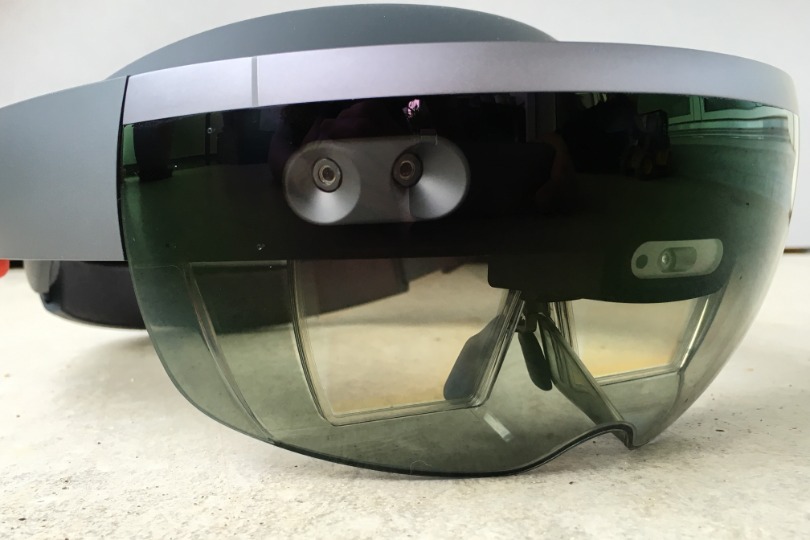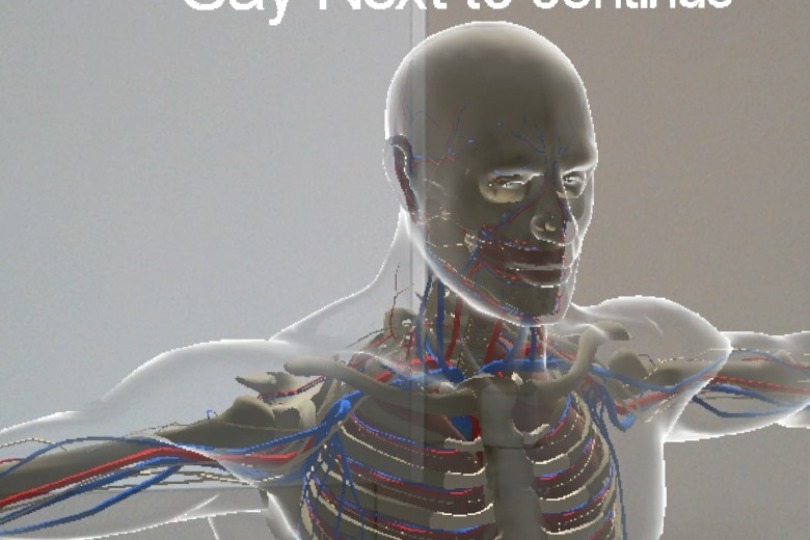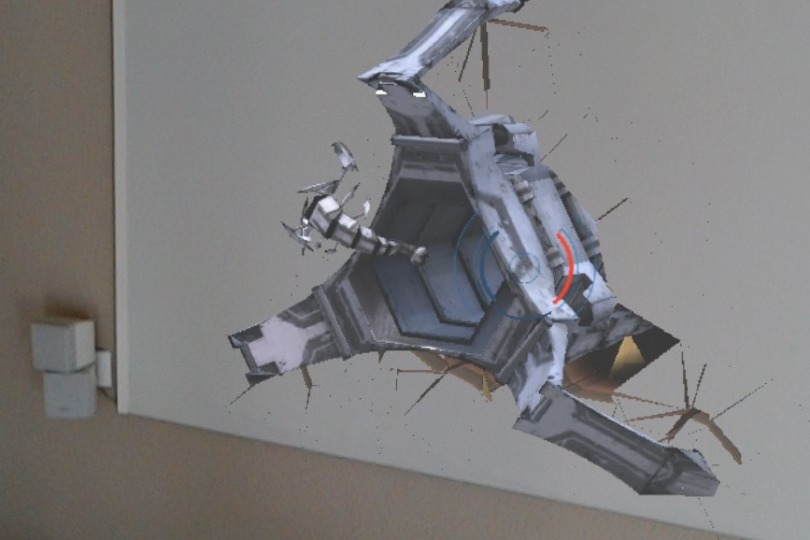The HoloLens in a nutshell
Depending on how you look at it, the HoloLens is a sort of digital glasses or a new form of portable computer, which allows 3D projections to be embedded in real space and interact with real objects. The HoloLens recognizes its environment, allowing objects to hang on walls or hide under tables, or interact with them, based on physical models. It is controlled by simple gestures, head motion, eye movement and speech recognition.
Unlike other headsets, the HoloLens is a fully independent, stand-alone computer and does not need a smartphone. The HoloLens integrates several sensors, Wi-Fi and cameras, operates for 3 hours on a single battery charge, and runs under Windows 10. Microsoft is currently offering the device in the US and Canada as a "mixed reality device" for USD 3,000. The term "mixed reality" (MR) is based on the fact that the device interacts more strongly with the environment than previous augmented reality (AR) applications,
- Virtual Reality (VR): Completely computer generated environment with the greatest possible immersion, but little relationship to the real world.
- Augmented Reality (AR): Computer-based extension of reality, often by blending or overlaying images and sound.
- Mixed Reality (MR): Mixing real worlds and environments with virtual environments.
Technology and structure
The user looks through a transparent glass visor. Optical waveguides, which look like two transparent screens, are embedded in the glass. These add light to the natural light to blend the three-dimensional worlds into the natural environment.
For spatial recognition, the HoloLens uses Kinect technology, in particular depth sensors. These continuously scan the environment. This is how the HoloLens recognizes and remembers the entire space, including walls and tables.
A Holographic Processing Unit (HPU) processes all the data from the sensors and computes the projections. The sensors comprise a gyroscope, acceleration sensor and head-tracking sensor, magnetometer, light sensor, microphones and a video camera. Everything has been integrated into a very good overall package. The high resolution and stable spatial positioning of 3D objects are extraordinary.


